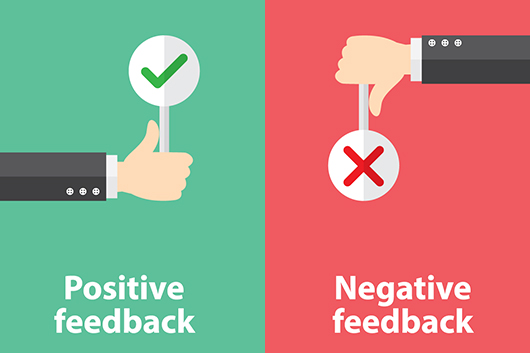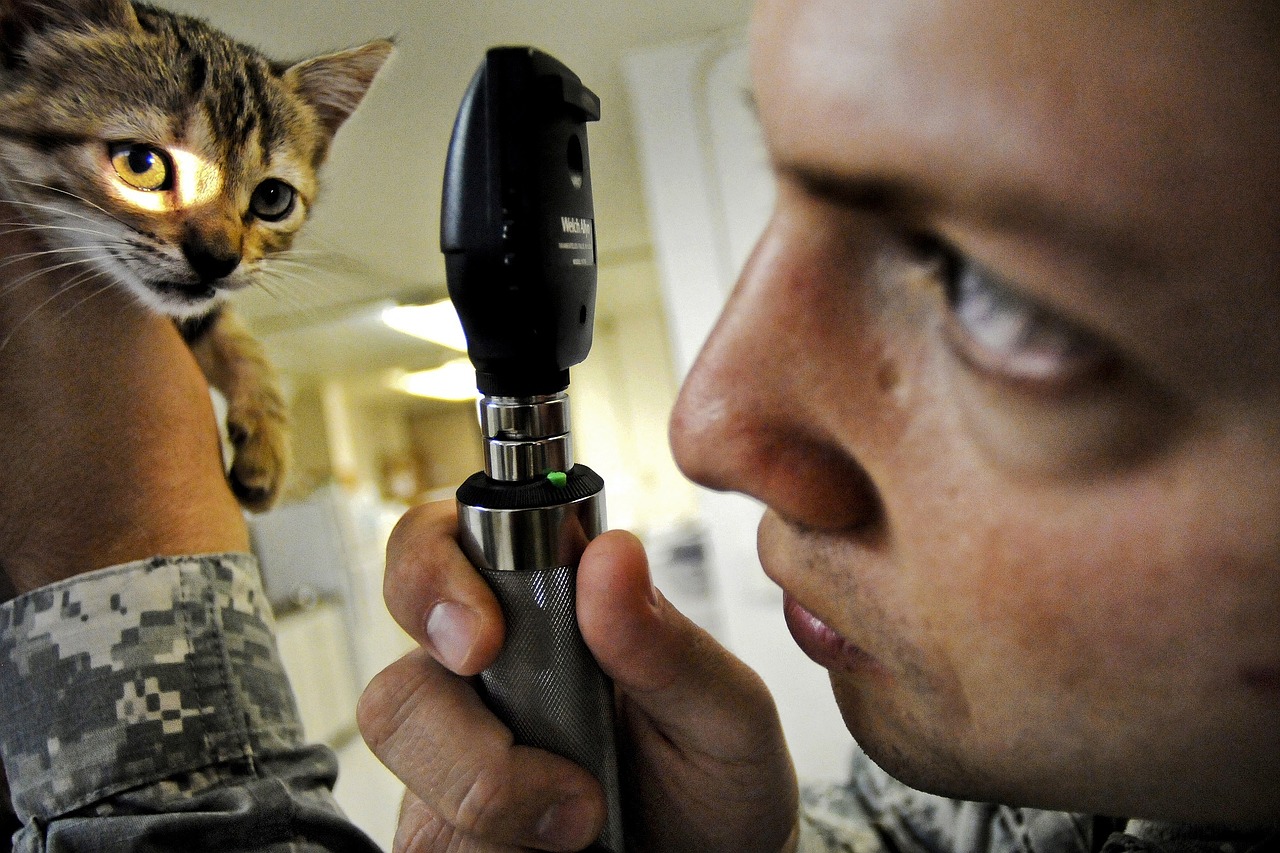
When selecting images for your website, stock photography is often the easiest and most feasible option. Not only is it readily available, but it also offers a professional finish that looks good online. However, although stock images may be appealing, it’s worth thinking twice before using them. Instead of helping your business, this type of content has the potential to put-off prospective patients.
Stock imagery is widely used for medical marketing and advertising purposes, with online sites – such as Getty, Shutterstock and 500px – offering an extensive range of high-quality photographs. Two kinds of stock images are available: royalty-free (almost unlimited use of a photo) and rights-managed (one time use of a photo under a specific license).
When creating a medical website you can access literally thousands of professional-looking images, from doctors and patients to facilities and procedures. Digital databases make them easy to search through and when you find an image you like you can download and upload it instantly.
With such images at your fingertips, why spend valuable time or resources arranging a photoshoot, or relying on your own camera skills or those of your team?
Stock photos may appear to be the great solution, but they lack one very important thing: credibility. Although they are depicting real people and situations, they are not real. This matters, especially in the medical world where demonstrating integrity and building trust are vital components in attracting and retaining patients.
To build trust you need authenticity. Yes, a well-composed stock shot of a smiling doctor and patient may appear to get your point across, but it adds little value to your overall message that you are a genuine, credible service provider. In fact, it can actually create a negative impression with the stylised finish overriding believability.
Potential and existing customers are not fooled by slick, inauthentic photos which show nothing of who you really are. They want to see the human side of your business. They want to see the actual doctors who will be treating them, the kinds of premises you work from and, if relevant, for example for a cosmetic surgery provider, before and after treatment shots.
By using real images you can humanize your service. You can help people establish an emotional connection with your brand which results in greater trust and, ultimately, more appointments. For this reason, taking your own photos, rather than downloading stock images, can be worth the effort – but it must be done right.
Unless you have the creative and technical know-how, taking your own photos for your website is not recommended for medical industry content. Whilst amateur may work well for your social media accounts, on a website they can appear low quality and unprofessional. Instead, it is worth employing a photographer to take the photos for you – just check your staff are comfortable with this before you go ahead.
Not only will a professional ensure the lighting and composition is right, but they can also assist you in developing a visual story that is consistent with your brand and values. This way, you get images that are authentic and unique, but polished. To do this you must be prepared to invest and to update photos when staff come and go, but the end result is often worth it.
In an ideal world, using your own professionally taken photographs on your website is the best way to go. However, sometimes time or money constraints can make stock photos the most viable option for all or part of your content.
If you are looking at using stock, be sure to use quality sites, choose images that complement your content and service values and avoid overly staged or posed shots. And, importantly, pay attention to the copyright licences and who else is using the image – the more it is used, the less effective your SEO efforts. A good graphic designer can guide you through the process.
Images may speak a thousand words, but what those words are matter – so make your website images a priority.
Having a professional website for your practice is critical in today’s digital world. But unless you are actively promoting it, prospective patients won’t find it. And if they can’t find it, they don’t know who you are, what you offer or how to contact you. Tactics such as SEO are essential, but they take time. In the meantime, PPC offers a very feasible solution.

PPC or Pay-per-click is a form of internet marketing used to drive traffic to websites. In contrast to the traditional advertising model where you pay money every time your campaign appears on a site, in PPC you only pay when someone clicks on your advert.
Search engine advertising is one of the most popular forms of PPC. Search lets you advertise your practice next to or above the organic results on a search engine page, such as Google, Bing or Yahoo, as a sponsored link. Google Adwords is the most popular PPC publisher. However, it is also now an option on social media sites such as Facebook and LinkedIn.
With most PPC publishers, how much you pay per click depends on how much you ‘bid’. By bidding you are choosing the maximum amount you want to pay for each of the keywords or keyword phrases people are most likely to use to search for your practice. E.g. doctor’s surgery, late night appointments, central Sydney.
If your objective is to attract more patients to your practice, PPC certainly offers many advantages.
When executed correctly, PPC advertising can be very effective. Unfortunately, most people are not equipped with the know-how to get the very best out of it.
As well as having an understanding of how PPC publishing systems, such as Google Adwords, work, you also need to have keen knowledge of what works PPC wise in your industry. That is why it often pays to seek professional help.
Here are some pointers to get started:
PPC offers many benefits but it should be viewed as a short term strategy – one to boast patient numbers over a limited period of time – not a complete marketing strategy. For the best results it should be used alongside other tactics such as SEO and your client email marketing campaign.
When considering the value of online patient-doctor reviews, medical professionals have traditionally been sceptical. Concerns over negative feedback and subsequent loss of credibility hit hard when your professional reputation is at stake. However, in today’s digital world where patient testimonials are increasingly viewed as a valuable source of information, the real risk could lie in resistance.
Over the past few years, healthcare review sites such as RateMDs, Yelp and Google have increased in popularity. Why? Because people like to share their experiences – good and bad.
According to a 2014 study by US-based company Software Advice, the number of patients using online reviews jumped 68% from 2013 to 2014 – with 24% of patients purporting to use them ‘sometimes’ or ‘often’. Of this group, 44% said they would consider going to an out-of-area doctor if the reviews were better than those who practiced nearby.
Although these are US statistics, Australia is never far behind. Because of this, it is important that medical professionals recognise this shift and respond to it in the most appropriate way.

Negative reviews happen, deserved or not. However, they happen less frequently than is often assumed. Feedback from the same study found that the majority of people tend to give positive or neutral reviews, with the intention of helping other patients rather than wanting to discredit a medical professional or service.
In addition, one or two bad ratings do not necessarily lead to a loss of potential patients. In fact, the reality is that most people actively look for positive reviews, rather than searching for negative ones. When they do come across a poor rating, it is also common for it to be dismissed as ‘unreasonable’, if all the other reviews are more affirmative.
Whether medical professionals embrace it or not, online reviews are here to stay. Patients are increasingly adopting a consumer mentality and those that recognise this shift are likely to fare better. Ultimately, there is always going to be some risk involved, but there are also some real benefits.
Firstly, independent online reviews sites can be great for exposure and recognition. Such ratings can promote a doctor’s expertise and quality of care, whilst side-stepping their legal obligations. Under the Medical Board of Australia guidelines, advertising of a regulated health service is not permitted. However, patient information sharing websites that invite public feedback and reviews about their experience of a health practitioner are not included in this.
So, provided the testimonials offered on these sites are not transferred to an individual health provider’s promotional media, there is no legal issue in encouraging them. In fact, encouraging them may in fact be the right way to go. Logically, the more reviews that are submitted, the better the chances of a fairer representation of service.
Perhaps most importantly, online reviews can act as a catalyst to encouraging better service. By opening the medical profession up to public scrutiny and transparency, it promotes greater care in working practices – something that should always be at the top of the agenda.
Although there is always the chance that someone will give a negative review or poor rating, most people will document the truth. If your service is something you are proud of and strive to constantly improve, then online reviews offer real value, provided they are carefully monitored and managed.
Everybody understands the importance of SEO in attracting clients. It is even more important for medical websites as the competition between providers is high. The success of any SEO project lies in selecting and using the keywords effectively. There is a beauty in keywords; when you use the right ones at the right place, you attract the right people to your website, and when not chosen and used wisely, keywords may derail your whole marketing campaign.
While planning the online marketing of your medical website, you need to know who is looking for your specialisation / services and what he/she will type in the search engines (like Google). When it comes to medical marketing, one needs a more conservative or concentrated approach rather than being a hyperbole or making an open field running.
In this race to page one ranking, you may want to stuff your website with a large amount of medical keywords. However, this may attract a bunch of folks which may not be interested in your specialisation / services. On the other hand, right keywords with their proper use will attract high-quality traffic to your website.
So, how will you figure out the right keywords and their effective use to not get into trouble with your readers and the search engines? Read on to know this…

A thorough research in the popularity and competitiveness of medical keywords will help you in attracting the right searchers. A great way to do this is by using the Google AdWords keyword planner tool. This will help you find competitive keywords which have high volumes of searches but little competition. Another important thing in choosing keywords is that they should be relevant. This means assessing the relevance of specific keywords for your site.
Another important point is that the selected keywords must not be too high or too low in number. An appropriate amount of keywords is always a win-win situation as they give you more choices to experiment with.
Always divide your keywords into sentences or paragraphs as search engine spiders do not read commas, punctuation or paragraph change. You will surely get good marks by the search engines for straight stuffing.
It is human nature to read and comprehend the bulleted list in a better way. So, don’t miss any opportunity to use your medical marketing keywords in bulleted sentences. Blend them properly and avoid repetition.
Search engines can find keywords no matter where they are located on your page. Therefore, instead of pouring all keywords at one place, distribute them. Start with the headline and then add few in starting paragraphs. Apart from this, use them in the navigation bar or sidebar. Create links of your keywords which take your readers to further relevant pages.
Breaking keywords in this manner will not appear overwhelming to readers, but ensure high points from search engines.
Some of the short words such as “of”, “for”, “a”, etc. are so much used in content that they are often ignored by search engines. Take advantage of this and create your keyword phrases with these “common words”. For example, if your keyword is “women cosmetic surgery”, you can use this keyword as “cosmetic surgery for women”.
Sometimes, you have several unrelated keywords which are impossible to put in a single page. Further, it is also not a good idea to put them all at a single page, as it will only dilute the engagement power of your content. How about creating separate pages for those keywords? Readers will find these pages completely natural while search engines will also index those separate pages.
This is again a great idea which can boost your marketing results. Generally, testimonials have generic terms of your services. However, if you take permission from the author and replace those generic words with relevant keywords, it will be of great help. It will look extremely natural to the readers and search engines will definitely give you some more points.
Your prospective patients may be searching for services using keywords in the first person. Though, it is difficult with medical keywords, but try to use them in the first person in the form of questions. For e.g. suppose someone searches for “Fix my shoulder”. If you have a blog post having title “How to fix my shoulder in Sydney”, chances would be high for your website to figure in search results.
Sometimes, some keywords seem to be of no use but they can work wonders if used properly. For example, suppose you have a keyword “plastic surgery”. You may not like to write a keyword like “cheap plastic surgery” as it indicates something of poor quality. However, you can always create a link for an article informing people about the negative impact of “cheap plastic surgery”.
These are the few ideas about using your medical marketing keywords wisely. These ideas will help you create content which is neither repetitive nor boring with optimal keyword frequency thereby improving your site’s ranking.
If you’re marketing a new treatment for Alzheimers Disease to carers and healthcare providers who are over 40, you may want to consider a more traditional channel for delivery of this information. Social media like Twitter is generally more suitable to people aged below 40. Conversely if you’re trying to reach research students in healthcare, then Twitter may be the perfect platform for communicating with them. The same applies to all the other social media platforms.

Social media isn’t for promotion of your healthcare brand if you happen to be touting goods and services. This is a place for building an online community, solidifying brand reputation and positioning your brand as a thought leader. This should be a place where people can find valuable information easily and quickly and also as a point of contact for the brand. Social media is yet another avenue for users to get in touch with your organisation.
Bring your organisation’s stories to light using social media. Share people’s passions and their lives with relatable stories that people will like and respond to.
Otherwise why would someone like or follow your organisation on Facebook and Twitter if you’re only repeating yourself?
This is a good way of going about your healthcare social media. Share only between 2-3 posts per day.

This is important as a compelling question may mean that the user will click through to the website to find out more.
Photos and video are the most successful types of content on social media. People become invested and engaged with social media through visual content. Analytics backs this up. It’s worth your time and energy to create beautiful images, quotes and infographics.
Be transparent and authentic in your dealings with people on social media. Consumers just want to be heard. Social media is a 24/7 channel and people will expect brands to reply promptly.
You’re not putting content out there to a captivated audience. You need to give back in terms of comments, responses and valuable feedback. This will build the audience.
For example if it’s Huntington’s Disease week or Heart Disease Week and that’s relevant to your brand, write and share content around this and then hashtag it.
When it comes to creating maximum impact with your healthcare website, you need to understand and implement all of the relevant trade tools. However a unique approach should be used for marketing in the healthcare industry.
There are often several very different audiences for your website. Each page or section of the site needs to be tailored to best engage with the specific audience. This may also require consideration of tone of voice, jargon and specific methods of communication. Consider working through the Information Architecture to best tailor each section and page of the healthcare website. Have sections for different audiences as required. This is particularly important when you work in a large healthcare organisation with many stakeholders.

Engage and speak directly to the audience of your page early on. Before you construct the page and its contents consider the purpose of the page and the action that you want the user to take. This user journey should be obvious from the moment a user opens up the page.
This is particularly important when you’re building a large website. The vast tracts of content need to be easily findable using an internal search engine. This is where keyword tagging and accurate metadata are important. Also the website itself needs to have the functionality to allow tagging, so that the content is findable by visitors. Properly tagged content will also make it far easier for Google and other search engines to index the site. To this end you should always use SEO best practice for both on-site and back end SEO.
The implicit purpose of the page should lead you to creating a call to action for that particular page. In healthcare websites, this call to action is rarely a strong one like ‘Buy now’, but rather it could be a softer CTA’s such as:

Position your healthcare brand as a leading authority in your healthcare discipline. This is done by linking to other healthcare resources that are optimally placed to provide the most up to date information for people.
Internal links also can provide a way to keep users engaged and to continue to browse the site and find related information after they’ve finished reading a particular page.
By linking to constantly updated information, your brand also doesn’t need to update and cache the information on their own site. This will therefore save you time and resources as the content creator for the site.
This can be via RSS blog feeds appearing on your site from other reputable sites. This could also mean that you embed a Twitter feed or Facebook feed that contains user-relevant information. This boosts your subscribers to the social media in any case.
Total Medical Design have industry experts who understand the complex and competitive world of the healthcare industry and the various responsibilities of healthcare organisations to patients and communities. We have worked with SME and large organisations in the past and have helped to bring about positive results through marketing. Let us show you how!
The digital world has increasingly moved from older computer interfaces towards screens in multiple different sizes and in multiple different devices. Designing a website that looks good on all screens can be a challenging task without the knowledge about this. The answer is responsive design!
Essentially responsive websites are designed intelligently so that the website adjusts itself according to the device, screen resolution and other factors. These sites still offer the same functionality and are far more user-friendly than their predecessors. However this isn’t a standard feature for most medical websites. If you’re still not convinced here are five reasons why you need responsive design right now.
Smartphone traffic accounted for one fifth of all Google searches in 2014. This trend isn’t going anywhere. With users finding new ways to access websites via their phones. In order to create a successful marketing plan for your medical business, you need to follow where the users are going and that’s towards mobile.

In terms of search engine rankings, Google prefers it when medical clinics and other businesses have responsive websites. From a technical, search engine perspective this makes it easier for Google to parse the website and interpret it – as there’s only one URL and the HTML is the same across all devices.
A few years ago, if you browsed the vast majority of websites on mobile you would need to magnify significantly and then do some finger gymnastics to attempt to interact with the website. However with a responsive website, the website and its functionality adapts automatically to your phone and this means no more frustrating error messages or webpages freezing up and closing automatically.
If you ask a site visitor which they prefer, a medical website with responsive design or an old fashioned website, well there’s no question about it!
As the responsive medical website is user-friendly and easy to navigate from phone, this boosts the number of people who request a call back, book an appointment at the clinic or successfully do what you want them to do on your website.

When an individual visits your well designed responsive website and finds it easy to use, they will also be able to share this in a much more meaningful way with their own friends and peers. This means you have therefore multiplied the likelihood of others visiting the site, having an enjoyable and easy experience and sharing this on with others.
So how do you plan and execute a new responsive website for your medical clinic or practice? Well it’s all about having the right expertise. Speak with Total Medical Design today about responsive medical websites. They have designed many responsive websites already for medical businesses and in many other sectors. Client feedback has been overwhelmingly positive.
GET A FREE NO OBLIGATION QUOTE ON A RESPONSIVE WEBSITE TODAY.
Medical practitioners and medical clinics looking to boost their online presence and traffic to their website need the assistance of a Google Adwords Certified marketing expert. That all may sound like it’s in a different language to you. So we will begin with what this certification is and why it’s vital for search engine marketing in the healthcare sector.
Google Adwords work in close association with Pay-per-click advertising. This is where Google Adwords are bought at variable prices as a part of a paid/sponsored advertising campaign on Google. These keywords that are picked up when people type words into Google. Basically your sponsored ad appears each time a user searches in Google, however you only pay once the user clicks through to your website. Pay-per-click ads (or PPC) also appear on other websites as sponsored ads. In both cases the sponsored ad allows the user to reach your own website or a custom-made landing page related to the advertising offer.
This technique of online advertising is effective and provides a high level of visibility while also being relatively inexpensive when compared to other methods of advertising. This is because you only pay each time someone clicks on an ad.

A PPC expert who has achieved certification needs to go through rigorous training and then followed by ongoing training, in order for the professional to maintain a high level of knowledge of search engine marketing.
Once an individual achieves Google certification in pay per click advertising, this person is internationally recognised as upholding an exceptional standard of service delivery with a high level of competency in PPC advertising.
Therefore investing in someone who is Adwords certified ensures that you get optimal and reliable results, without taking any shortcuts that could get your website punished by Google. An Adwords certified PPC specialist understands how to find the most relevant and highly searched keywords for your campaign and balancing this against the cost per word.

Total Medical Design’s certified PPC specialist is Leon Fernandes who has had over ten years of experience in running successful digital marketing campaigns for dozens of clients. Along with a certified Adwords specialist, another essential part of having a great PPC campaign is the copy for the ads to go along with it.
This is where you need to have a fully integrated marketing service provider to back up your ambitious plans. Total Medical Design have a copywriter Athena Dennis on board who brings over 13 years of experience in digital marketing copywriting and who knows how to craft a terrific ad for your online healthcare website. Together Athena and Leon can put together a bespoke PPC campaign that is built to be robust and successful. They can also provide you with a complete blueprint for success.
Total Medical Design will be able to help with designing a complete PPC campaign and ensure that this runs in a completely cost-effective, economical and beneficial manner with a rapid return on investment scenario in place.
The ever-increasing amount of internet traffic out there comes not from reading text but from watching video. Streaming video on YouTube and other providers accounts for over 80% of web traffic nowadays! A recent Forrester Research paper showed that in terms of effectiveness, a one minute video is worth an estimated 1.8 million words.
As a healthcare professional or doctor, you have a new medium through which you can get to know patients, build rapport with them, inform and educate them about important health issues and also build up a client base. Here are some reasons why you shouldn’t be left behind on video and rich media for your medical website.
Video is adaptable to just about any modern device from iPad to phone to PC. The fast and easily comprehended format of video allows for people to get the message in a simple and fast way that fits in with their own busy lives. In this way, if you need to explain concepts to your patients or potential new clients, then video is a much more powerful medium than text.

Not only do human eyes enjoy video, but also website crawlers that calculate search engine rankings. Rich media such as video and audio is loved by Google. So your medical website is going to be much more findable through video search and also it may in fact rank higher than other doctor’s websites with text only.
They can be used on your medical website but are easily transferrable to other platforms and for other parts of your overall marketing strategy. So for example an introductory video which welcomes patients to the practice can be used on your own website, on your Linked In Profile, on Facebook and in your own corporate prospectus and sent out via e-newsletter when new clients register at the practice.
This is a fast and easy way for new patients to see if what your clinic offers is what they are after. Via video they can take a virtual tour of the practice and find out about the services and products that your medical practice offers. They therefore don’t need to call up the practice and speak with your reception staff to determine if the medical clinic is what they need. They already know this from video.

Testimonials from previous patients talking about treatments are incredibly valuable for medical practitioners. They act as a stamp of approval and legitimacy and contribute positively to the decision-making process for new clients.
In summary, video is a terrific way to boost your online visibility, reputation, brand identity and to qualify new clients for your medical practice. For the most comprehensive and clever approach to video production and video marketing, speak with the experts in medical and healthcare marketing, Total Medical Design today (0433 399 294)!
GET A FREE NO OBLIGATION QUOTE ON A LINKED IN CAMPAIGN FOR YOUR HEALTHCARE BUSINESSS.
Although Linked In is generally thought of as being the domain of business people, it has flourished as one of the most useful social media tools for medical professionals and doctors.
There are now over 2 million people working in the healthcare sector who are using LinkedIn. So what’s the secret to crafting a superb Linked In profile, and how do you best use it to promote yourself and your business? Read on to find out.
Place your professional information on Linked In and you’ll be searchable on Google and other search engines. Linked In typically pops up first when you search on someone’s name. This is particularly helpful when you’ve been away at a conference and you’re looking to reconnect and network with people that you’ve met. Linked In is a simple and easy way to maintain these connections for the future.

1. Posting your CV and published work
Linked In has facilities for you to publish your previous academic research papers, journal publications and accomplishments. You can also go into detail about your academic and professional achievements. This will prove invaluable if you are planning on selling your skills to peers in the industry.
2. Stay abreast of industry developments
When you join Linked In you should join public groups that are relevant to your role and industry. This is where you will find like-minded colleagues. If you are looking for work on Linked In, you may want to try the following strategy. Start following key industry recruiters for their news updates, and request to add them as a friend then send them your CV. They will appreciate your bold and proactive approach.

For novices to the social media platform, there are a few essential areas to focus your efforts on. Your profile should contain the following at a minimum:
1. Your contact information including email and telephone details.
If you don’t want to have this information freely available on the internet, then you should change your privacy settings on Linked In so that this information is only available to your Linked In connections.
2. An image
Ensure that the image is professional looking and a head and shoulders shot which clearly shows your smiling face. An approachable and warm looking photo of you is critical to providing the most favourable impression.
3. Headline and Summary
A headline is the first thing that appears in the search function when someone searches for a healthcare professional in your field. The headline should be succinct, and reflect your role and skills. The summary is another important aspect to this and goes into more detail about your skills and experience. These appear at the top of your profile and are critical to informing people of your capabilities.

4. Use keywords
This ensures that your profile is findable by industry visitors and those searching for your skill-set. Ensure that you include your medical expertise, consulting and management expertise and even soft skills where relevant such as people management, team building, problem solving and collaborative experience.
5. Add rich media
Video, slides, audio or images all add an extra dimension to a Linked In profile. Where possible include these in your profile.
To get a complete social media strategy for selling your skills and/or your healthcare business on Linked In, or for a completely integrated healthcare marketing strategy, speak with Australia’s experts in the healthcare industry – Total Medical Design.
“GET A FREE NO OBLIGATION QUOTE ON A LINKED IN CAMPAIGN FOR YOUR HEALTHCARE BUSINESSS”